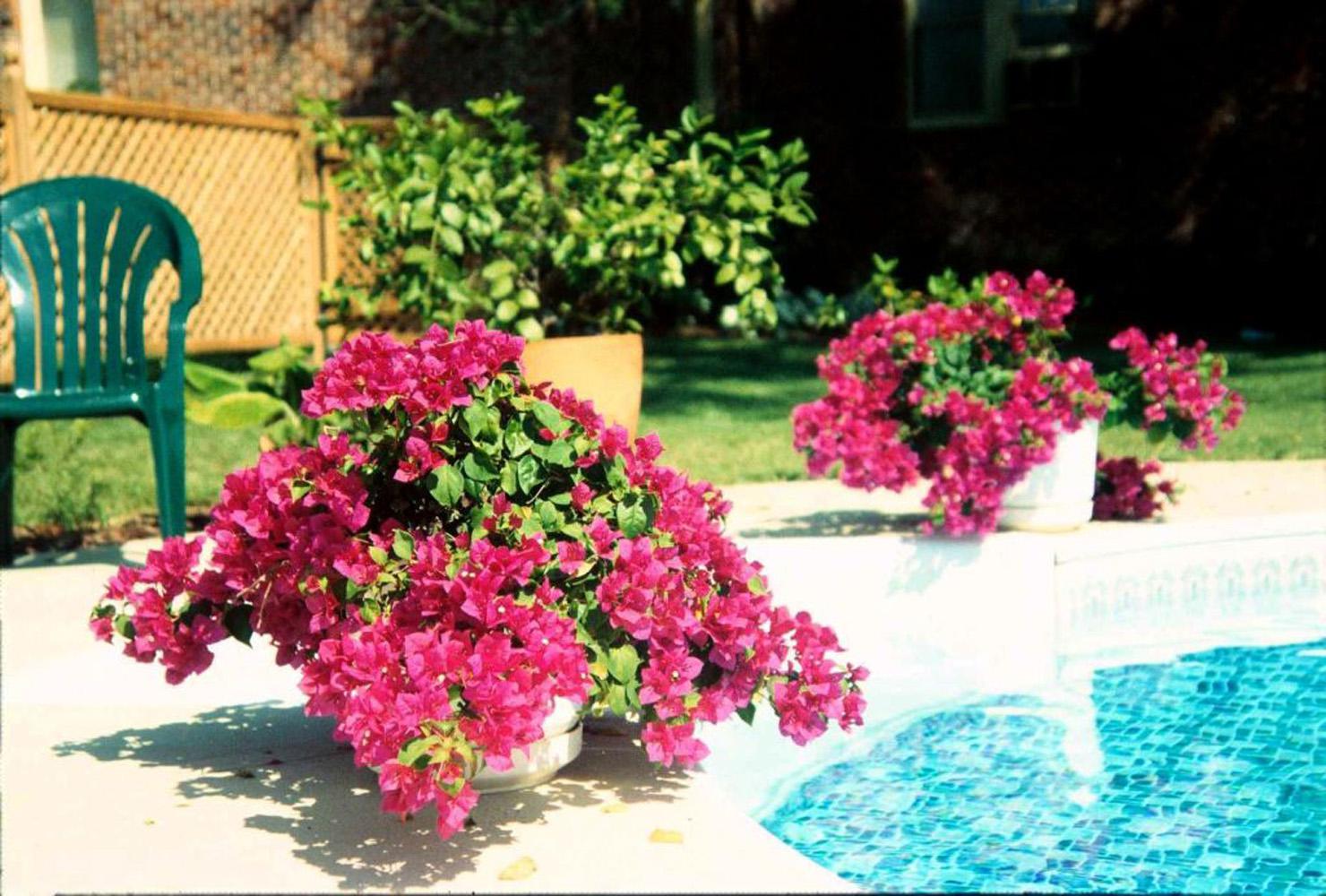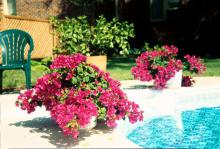Information Possibly Outdated
The information presented on this page was originally released on July 8, 2004. It may not be outdated, but please search our site for more current information. If you plan to quote or reference this information in a publication, please check with the Extension specialist or author before proceeding.
Bougainvilleas add a touch of the tropics
By Norman Winter
MSU Horticulturist
Central Mississippi Research & Extension Center
When the intense heat of summer sets in, we often find it is tropical plants that explode with color around the home. One of the most floriferous is the bougainvillea, which has hundreds of almost-iridescent-colored flowers.
These colorful flowers are actually three bracts, or modified leaves, and surround a small white or yellow tubular flower. This tubular flower is a delight to the darting ruby-throated hummingbird that will come to feast on the nectar.
Though they climb walls in the tropical or Mediterranean regions, bougainvillea also excels in baskets and containers. When in bloom, nothing can come close to its beauty.
The bougainvillea is in the same family as the Four-O'Clock and flowering tobacco, and was named for a French Explorer and navigator. They are native to South America.
In all but the extreme southern coastal Mississippi, the bougainvillea will have to be treated as an annual or grown in a container for protection during the winter. They bloom easily in containers and can be kept pot-bound for a long time.
The bougainvillea blooms in poor soils all over the world as long as they are well drained. When buying your soil for a container, don't skimp. Buy a good one that is light, airy and well-drained.
Be careful when transplanting, as the bougainvillea's roots are brittle. Grow in full sunlight and keep well watered and fed when in bloom. Use a fertilizer with a 1-2-1 ratio, like a 10-20-10.
Bougainvilleas that are growing in containers with a supporting trellis can be combined with plants that cascade downward and that are drought tolerant, like the New Gold lantana. But the real show will occur when it's planted with other brightly colored bougainvilleas. Try pink varieties with Escapade blue plumbago.
The number one question that arises from gardeners trying to grow bougainvilleas is, "Why can't I get mine to bloom?" After blooming has ceased, fertilize and water to encourage good new growth. When adequate growth has occurred, the water supply and food supply must be reduced to induce blooms.
Keep the soil barely moist during this time. Blooms will usually form on the terminals. Pinch these to encourage rapid blooming all along the branch. The plant does need water when in bloom. Don't be afraid to prune as necessary to keep tidy in your container.
When growing in the landscape in southern Mississippi, plant along a wall for extra winter protection. The older your plant gets the more winter it will be able to take, so plant immediately after the last frosty weather.
A few Bougainvillea buttiana hybrids to try include Golden Glow (yellow gold) and Texas Dawn (light purple). Also try B. glabra varieties Magnifica (purple) and Sanderina (purple), and B. spectablis varieties African Sunset (orange) and Tahitian Dawn (gold). Some of the most common are Barbara Karst (pink), Raspberry Ice (raspberry-red) and San Diego Red (red). Also look for the bi-colored Magic (mauve and white).
Though it is mid-summer, the bougainvillea is a good buy and can be found easily. Your landscape can look like the Caribbean until fall.




